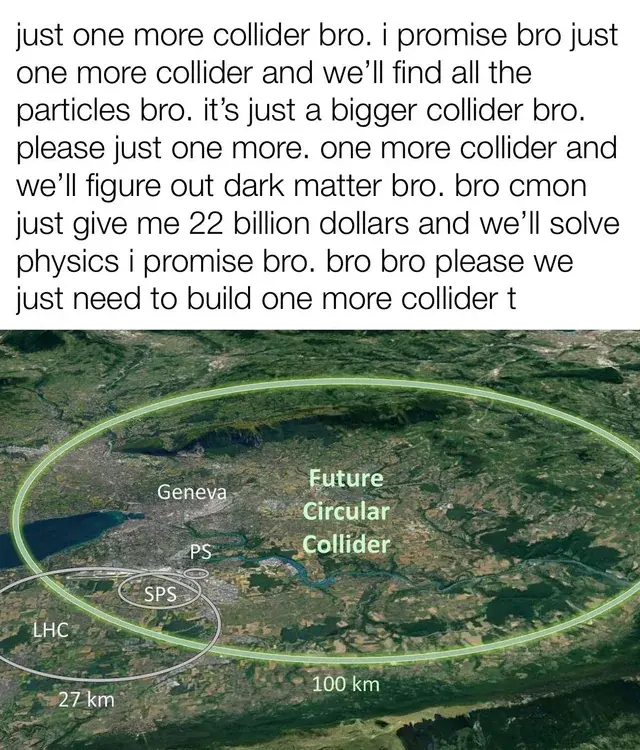this post was submitted on 08 Nov 2023
1690 points (95.2% liked)
Science Memes
10752 readers
1596 users here now
Welcome to c/science_memes @ Mander.xyz!
A place for majestic STEMLORD peacocking, as well as memes about the realities of working in a lab.

Rules
- Don't throw mud. Behave like an intellectual and remember the human.
- Keep it rooted (on topic).
- No spam.
- Infographics welcome, get schooled.
Research Committee
Other Mander Communities
Science and Research
Biology and Life Sciences
- !abiogenesis@mander.xyz
- !animal-behavior@mander.xyz
- !anthropology@mander.xyz
- !arachnology@mander.xyz
- !balconygardening@slrpnk.net
- !biodiversity@mander.xyz
- !biology@mander.xyz
- !biophysics@mander.xyz
- !botany@mander.xyz
- !ecology@mander.xyz
- !entomology@mander.xyz
- !fermentation@mander.xyz
- !herpetology@mander.xyz
- !houseplants@mander.xyz
- !medicine@mander.xyz
- !microscopy@mander.xyz
- !mycology@mander.xyz
- !nudibranchs@mander.xyz
- !nutrition@mander.xyz
- !palaeoecology@mander.xyz
- !palaeontology@mander.xyz
- !photosynthesis@mander.xyz
- !plantid@mander.xyz
- !plants@mander.xyz
- !reptiles and amphibians@mander.xyz
Physical Sciences
- !astronomy@mander.xyz
- !chemistry@mander.xyz
- !earthscience@mander.xyz
- !geography@mander.xyz
- !geospatial@mander.xyz
- !nuclear@mander.xyz
- !physics@mander.xyz
- !quantum-computing@mander.xyz
- !spectroscopy@mander.xyz
Humanities and Social Sciences
Practical and Applied Sciences
- !exercise-and sports-science@mander.xyz
- !gardening@mander.xyz
- !self sufficiency@mander.xyz
- !soilscience@slrpnk.net
- !terrariums@mander.xyz
- !timelapse@mander.xyz
Memes
Miscellaneous
founded 2 years ago
MODERATORS
you are viewing a single comment's thread
view the rest of the comments
view the rest of the comments

There are multiple reasons for that. We don't know the decay channels of already discovered particles precisely. So there might be very rare processes, that contribute to already known particles. It is all a statistical process. While you can give statements on a large number of events, it is nearly impossible to do it for one event. Most of the particles are very short-lived and won't be visible themselves in a detector (especially neutral particles). Some will not interact with anything at all (neutrinos). Then your detectors are not 100% efficient, so you can't detect all the energy, that was released in the interaction or the decay of a particle. The calorimeters, that are designed to completely stop any hadrons (particles consisting of quarks) have a layer of a very dense material, to force interactions, followed by a detector material. All the energy lost in the dense material is lost for the analysis. In the end you still know, how much energy was not detected, because you know the initial energy, but everything else gets calculated by models, that are based on known physics. A neutral weakly interacting particle would just be attributed as a neutrino.